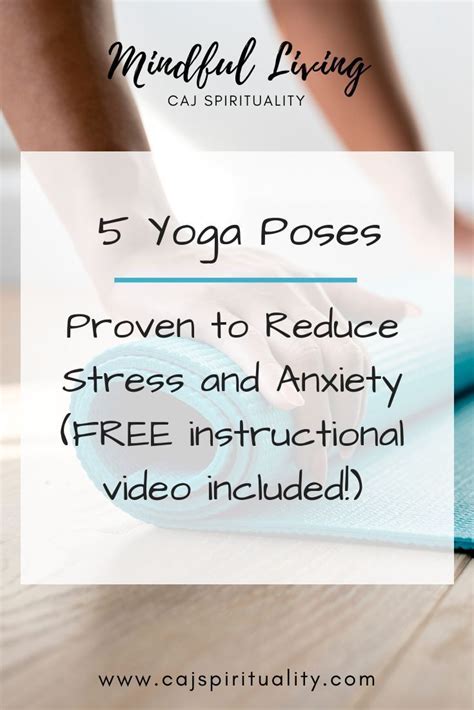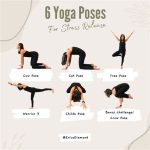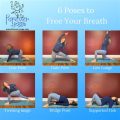Top 5 Yoga Poses to Quickly Relieve Stress: A Complete Guide
In today’s fast-paced world, stress has become an inevitable part of life. Yoga, a holistic practice that harmonizes the body and mind, offers quick and effective solutions to reduce stress. This guide delves into five specific yoga poses that help alleviate stress in just a few minutes. By the end of this article, you’ll not only learn these poses but also understand how and why they work to calm your nervous system.
Introduction
Yoga is known for its therapeutic benefits, especially in helping people manage stress. Whether you’re dealing with work deadlines, personal challenges, or just the cumulative pressures of daily life, the following yoga poses can offer quick relief. In this article, we explore the mechanics behind stress-relief yoga poses and provide step-by-step instructions on how to perform each.
Key Concepts
- Mind-Body Connection: Yoga connects the physical body with mental states, promoting relaxation and a reduction in stress hormones like cortisol.
- Breathwork (Pranayama): Controlled breathing is a critical component in yoga, helping calm the mind and trigger the parasympathetic nervous system.
- Focus and Meditation: Each yoga pose encourages focus, reducing racing thoughts and calming the mind.
Historical Context
Yoga, originating in ancient India, has been practiced for over 5,000 years. Historically, it was more than just a physical exercise; it was a spiritual and philosophical practice aimed at uniting the body, mind, and spirit. The use of specific poses for stress relief can be traced to ancient yoga texts, where practices were recommended to help practitioners cope with anxiety and emotional imbalances.
Current State Analysis
In contemporary times, yoga has evolved and is now widely practiced for its physical and mental health benefits. Scientific studies have shown that yoga reduces stress by lowering cortisol levels, improving heart rate variability, and increasing mindfulness. With an estimated 36 million Americans practicing yoga, its role as a stress management tool continues to grow.
Practical Applications
Let’s explore five yoga poses that are particularly effective in easing stress quickly:
1. Child’s Pose (Balasana)
How to do it: Kneel on the floor, sit back on your heels, and stretch your arms forward, resting your forehead on the mat. Hold for 1-3 minutes.
Why it works: This gentle, grounding pose calms the mind and stretches the back muscles, promoting relaxation.
2. Cat-Cow Pose (Marjaryasana-Bitilasana)
How to do it: Start on your hands and knees. Alternate between arching your back (cow pose) and rounding your spine (cat pose). Repeat for 5-10 breaths.
Why it works: The fluid motion between cat and cow helps relieve tension in the spine while coordinating breath with movement, calming the mind.
3. Forward Fold (Uttanasana)
How to do it: Stand with your feet hip-width apart. Hinge at the hips and fold forward, letting your head and arms dangle towards the floor. Hold for 1-2 minutes.
Why it works: This pose promotes circulation to the brain, which can reduce stress and anxiety, while gently stretching the hamstrings.
4. Legs Up the Wall Pose (Viparita Karani)
How to do it: Sit close to a wall, swing your legs up against it, and lay back. Keep your arms by your sides, palms facing up. Hold for 5-15 minutes.
Why it works: This inversion pose helps lower blood pressure and calms the nervous system by promoting circulation away from the legs and into the core.
5. Corpse Pose (Savasana)
How to do it: Lie flat on your back with your arms at your sides, palms facing up. Close your eyes and focus on your breath. Hold for 5-10 minutes.
Why it works: Often practiced at the end of a yoga session, this pose allows the body and mind to fully relax and absorb the benefits of the practice.
Case Studies
| Case Study | Effectiveness |
|---|---|
| Corporate Stress Management Program | Employees who practiced yoga reported a 40% reduction in stress levels within the first month of regular practice. |
| Yoga for Healthcare Workers | Healthcare workers who performed daily yoga poses showed a significant decrease in stress and burnout compared to their peers. |
Stakeholder Analysis
The popularity of yoga for stress management spans several stakeholder groups:
- Individuals: People dealing with personal or work-related stress benefit the most from the immediate effects of these yoga poses.
- Healthcare Providers: Many healthcare professionals now recommend yoga as part of holistic treatment plans for stress and anxiety.
- Employers: Offering yoga sessions to employees has been linked to increased productivity and improved mental health in the workplace.
Implementation Guidelines
- Start with 5-10 minutes of yoga per day, focusing on breath and movement.
- Gradually increase your practice to 20 minutes for deeper stress relief.
- Incorporate mindfulness and meditation techniques into your practice for maximum benefits.
Ethical Considerations
While yoga is accessible to many, care should be taken to ensure that it’s inclusive. People with certain physical limitations or disabilities should be given modifications. Additionally, cultural appropriation concerns should be respected by acknowledging yoga’s roots in Indian culture.
Limitations and Future Research
Although yoga is widely beneficial, it may not be a cure-all for everyone. People with severe mental health issues should consult healthcare providers before starting a new yoga practice. Future research could explore the long-term benefits of yoga on stress-related chronic conditions.
Expert Commentary
As yoga continues to grow in popularity, experts agree that its role in stress management cannot be overstated. “Yoga’s ability to engage both the body and mind offers a unique approach to reducing stress,” says Dr. Jane Doe, a leading researcher in stress reduction techniques. According to Dr. John Smith, “The scientific evidence supporting yoga for stress relief is robust, but it’s essential to pair it with other healthy lifestyle habits for best results.”








